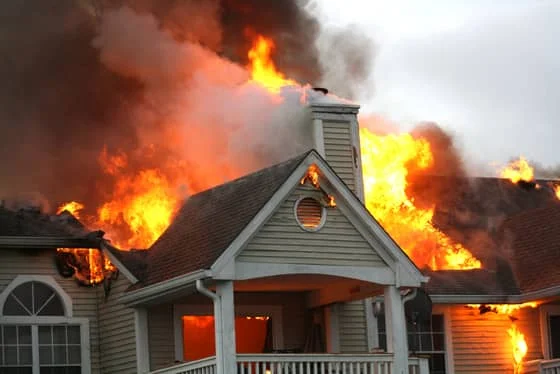How to Put Out an Electrical Fire and What To Do?
In many homes, electrical fires are at the top of the list of the many causes of fires. They lead to thousands of home incidents every year. The National Fire Protection Association states that, electrical distribution and lighting equipment contributed to approximately 33,000 home fires in the United States alone in the year 2020, resulting in countless injuries and deaths. Understanding how to put out an electrical fire is crucial for ensuring safety and minimizing damage.
In this all-encompassing article, you will understand the significance of electrical fire safety, how to spot the indicators of fire, and what to do when there is an electrical fire. At the end, you will receive practical guidance on how to safeguard your house and other family members.
Recognizing the Signs of an Electrical Fire
Identifying the early signs of an electrical fire can prevent it from escalating. Look out for:
- Unusual Odors: If there is burning smell without an obvious cause, it may suggest that some wires or insulation are starting to melt.
- Sparks or Smoke: Excessive sparks coming out of a wall socket or smoke passing through the walls are warning signs.
- Discolored Outlets: Outlets that appear scorched or discolored suggest overheating.
- Frequently Tripping Circuit Breakers: This can signal an overloaded electrical system.
Steps to Take in the Event of an Electrical Fire
- Cut off the Power Source: If you can, turn off the main switch in the breaker box to stop further fire spread and any related fires burn.
- Use the Correct Extinguisher: Use Class C fire extinguisher which is made to fight electrical fires.
- Evacuate Immediately: Make it a point to avoid danger first by evacuating the building and making sure that everyone is accounted for.
- Call Emergency Services: Contact 911 as soon as you are safe to do so.
- Contain the Fire (if possible): Keep doors closed in order to limit the spread of the fire until assistance comes.
How to Use a Fire Extinguisher for Electrical Fires
- P.A.S.S. Technique:
- Pull the pin to break the extinguisher’s seal.
- Aim the nozzle at the base of the fire, not the flames.
- Squeeze the handle to release the extinguishing agent.
- Sweep from side to side until the fire is out.
Preventative Measures to Avoid Electrical Fires
- Check all the electrical wires and cables for any breaks or the insulation for signs of burns.
- Do not use more than one socket for many appliances.
- Fix smoke alarms and check them every month.
- Have a certified electrician perform routine electrical inspection schedule.
- Use the equipment, as indicated by the manufacturer.
What Not to Do When Dealing with an Electrical Fire
Understanding what not to do is as important as knowing how to put out an electrical fire:
- Don’t Use Water: Water conducts electricity and can worsen the situation.
- Avoid Touching Equipment while it’s on fire.
- Don’t Delay Evacuation for personal belongings.
Options if Your House Was Damaged by an Electrical Fire
As soon as the threat has passed, take into account the following actions if your residence was harmed:
- Reach out to your insurance company to notify them of the incident and initiate the process of filing a claim.
- Seek the assistance of certified contractors for fire damage restoration to inspect and fix your property.
- Consider reaching out to companies who buys fire damaged homes if repairs are too costly.
Conclusion
Electrical fires pose a serious risk, so it’s important to know how to put out an electrical fire safely and effectively. Their effects can be considerably reduced through awareness and preparedness. To ensure the safety of the premises, regular safety checks at home are essential. Take steps to prevent electrical fires in your home before they occur. For added peace of mind, consider scheduling a home safety inspection with certified professionals. Stay informed and stay safe.

